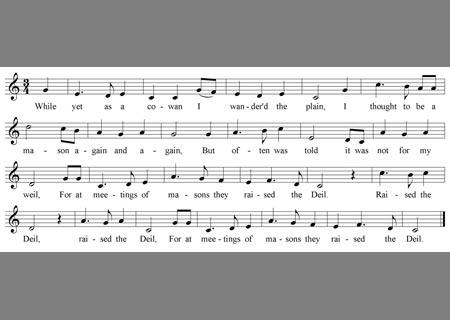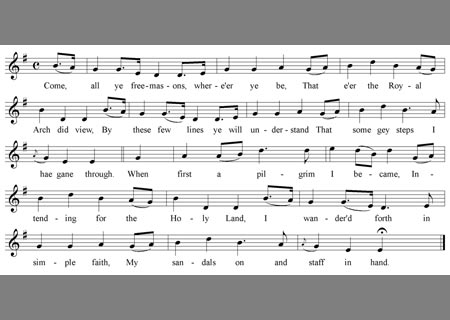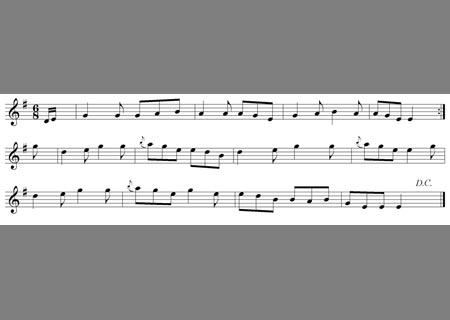Masonic Song in Scotland: Folk Tunes and Community
- Volume 27, Number 1
- Katherine Campbell
- View PDF | Download PDF
- http://journal.oraltradition.org/issues/27i/campbell
Abstract
This article explores the place of Masonic songs historically in Scotland, assessing the oral culture surrounding the genre. The article further shows that folk tunes were commonly used and investigates aspects of the group performance that was central to the Lodges. Finally, the study concludes with an examination of a Masonic procession in Northeast Scotland that survives to the present day, focusing especially on the role of music and song within it.
eCompanion
“The Master’s Song,” (Anderson 1723:85-86).
Illustration: Eighteenth Century Collections Online, http://www.jisc-content.ac.uk/collections/eighteenth-century-collections-online-ecco.
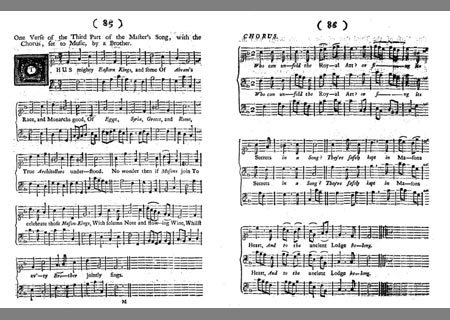

“The Warden’s Song,” (Anderson 1723:87-88).
Illustration: Eighteenth Century Collections Online, http://www.jisc-content.ac.uk/collections/eighteenth-century-collections-online-ecco.


“The Enter’d Prentice’s Song,” (Anderson 1723:84 [lyrics], 90 [music]).
Music Notation: Katherine Campbell
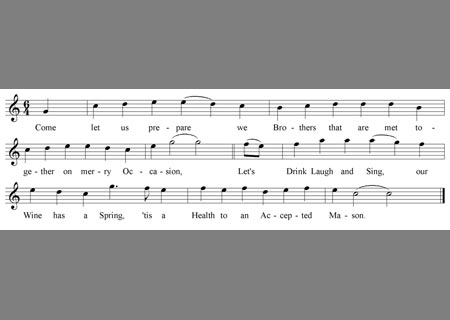

“Farewell to the Brethren at St. James Lodge, Tarbolton,” (Dick 1903:214-15).
Music Notation: Katherine Campbell
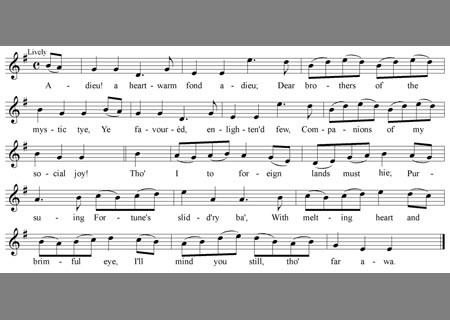

“While Yet as a Cowan,” (Greig-Duncan 1374C [tune], St Cecilia 1782:no. 3 [text]).
Music Notation: Katherine Campbell
